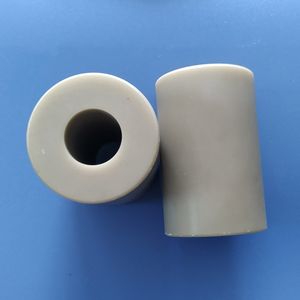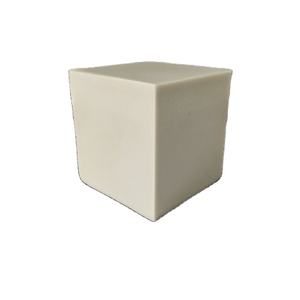Discover Premium Ceramic Products | Durability & Elegance United | Advanced Ceramics
PRODUCT PARAMETERS
Description
Overview of aluminum nitride ceramics
Aluminum Nitride Ceramic is an advanced ceramic material with aluminum nitride as the main component. It has been widely used in electronics, optics, and mechanics due to its unique properties.
Features of aluminum nitride ceramics
High thermal conductivity: Aluminum nitride ceramics have relatively high thermal conductivity, usually between 170-260 W/m·K, which makes it an excellent heat dissipation material. It is especially suitable for electronic devices that require efficient heat dissipation, such as substrate materials for power semiconductor devices.
Good electrical insulation: Despite its high thermal conductivity, aluminum nitride ceramics are excellent insulators of electricity, which can effectively prevent current leakage and ensure the safe operation of electronic components.
Low dielectric constant and dielectric loss: These characteristics make aluminum nitride ceramics very suitable for use in high-frequency circuits because it can reduce energy loss during signal transmission.
High temperature resistance: Aluminum nitride ceramics can maintain structural stability and strength at extremely high temperatures. Its melting point is about 2800°C, so it is suitable for applications in high temperature environments.
Low thermal expansion coefficient: Compared with semiconductor materials such as silicon, aluminum nitride has a lower thermal expansion coefficient, which means it has better dimensional stability when the temperature changes, which helps improve packaging reliability.
Corrosion resistance: Aluminum nitride ceramics have good chemical stability to most molten metals and are not easily oxidized or corroded, allowing them to perform well in harsh environments.
High mechanical strength: Although not as hard as some other types of ceramic materials, aluminum nitride ceramics still provide enough mechanical strength to allow them to be used in many structural applications.
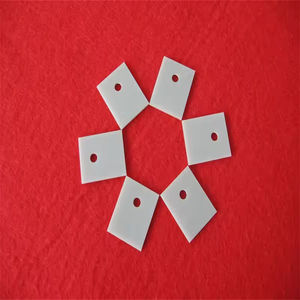
(Very High Thermal Conductivity Aluminum Nitride Ceramic AlN Substrate)
Specifications of Very High Thermal Conductivity Aluminum Nitride Ceramic AlN Substrate
The Really High Thermal Conductivity Aluminum Nitride Ceramic AlN Substrate uses superior performance for advanced electronic applications. This material has a thermal conductivity of 170-220 W/mK, making it perfect for taking care of warmth in high-power gadgets. It functions far better than alumina ceramics, which generally reach 20-30 W/mK. The high thermal conductivity guarantees effective warmth dissipation, lowering the danger of element failing.
The substratum offers superb electric insulation, with a volume resistivity surpassing 10 ^ 14 Ω · centimeters. This protects against existing leak in circuits, making certain trusted procedure. Its dielectric continuous keeps reduced at 8-9 across a vast regularity variety, decreasing signal loss in high-frequency applications.
Aluminum nitride has a thermal expansion coefficient near silicon (4.5 × 10 ^ -6/ ° C). This minimizes thermal stress when coupled with silicon-based semiconductors, boosting device durability. The material’s flexural stamina ranges from 300-400 MPa, supplying mechanical toughness for requiring atmospheres.
It runs properly in temperature levels from -50 ° C to 600 ° C. This makes it suitable for aerospace, automotive, and commercial systems exposed to extreme conditions. The ceramic resists chemical deterioration, maintaining security in harsh environments.
Surface finish top quality is critical for thin-film circuits. The AlN substrate achieves a surface area roughness listed below 0.1 μm after polishing. This makes sure accurate deposition of conductive layers. Personalized measurements include densities from 0.3 mm to 5mm and sizes up to 200mm x 200mm.
Applications include LED product packaging, power modules, laser diodes, and RF components. Its combination of thermal management, electrical insulation, and mechanical strength sustains next-generation electronic devices. Manufacturers prioritize this product for its ability to boost performance while reducing system dimension.
The substrate works with common processing methods like metallization, brazing, and cord bonding. This simplifies combination right into existing production workflows. Strict quality control guarantees uniformity in thermal, electric, and mechanical residential or commercial properties.
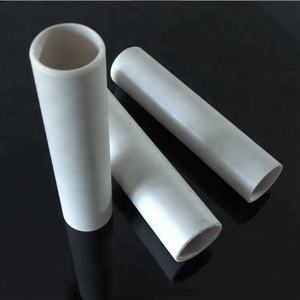
(Very High Thermal Conductivity Aluminum Nitride Ceramic AlN Substrate)
Applications of Very High Thermal Conductivity Aluminum Nitride Ceramic AlN Substrate
Light Weight Aluminum Nitride Ceramic AlN substrates have high thermal conductivity. This makes them perfect for managing warmth in innovative technologies. AlN carries out warmth better than lots of various other ceramics. It works well in circumstances where materials have to deal with high temperatures and electrical insulation.
AlN substrates prevail in electronic devices. They cool high-power devices like processors and transistors. Warmth builds up swiftly in these parts. AlN moves warmth away quick. This stops devices from overheating. It enhances performance and life-span.
LED illumination systems make use of AlN substratums. LEDs produce warmth during operation. Way too much warm reduces brightness and effectiveness. AlN spreads warm uniformly. This maintains LEDs steady with time. It allows brighter lights without damage.
Power modules in electrical automobiles and renewable resource systems depend on AlN. These components take care of high voltage and existing. Heat can cause failings. AlN substratums manage thermal anxiety. They ensure components function safely under hard problems.
High-frequency communication tools use AlN for RF elements. Signal loss matters in RF applications. AlN decreases energy loss while moving warmth. This keeps signal quality high. It supports trusted efficiency in telecom and radar systems.
Aerospace and vehicle sectors need materials that deal with severe environments. AlN substrates survive high temperatures and mechanical stress and anxiety. They cool down sensing units and control systems in engines or spacecraft. This stops malfunctions throughout essential procedures.
Laser diodes and optical systems benefit from AlN. Precise temperature level control is crucial for laser accuracy. AlN maintains secure conditions. It ensures regular outcome in medical lasers or reducing tools.
AlN substrates are chemically secure. They withstand reactions with acids or bases. This makes them appropriate for rough industrial setups. They protect sensitive components in destructive environments.
AlN works in semiconductor manufacturing. It functions as a base for expanding gallium nitride layers. The thermal match between AlN and GaN minimizes defects. This boosts the high quality of high-performance digital gadgets.
The flexibility of AlN substrates sustains development across industries. Their capacity to manage warmth efficiently addresses difficulties in modern innovation. Engineers choose AlN for reliability sought after applications.
Company Introduction
Advanced Ceramics founded on October 17, 2014, is a high-tech enterprise committed to the research and development, production, processing, sales and technical services of ceramic relative materials and products.. Since its establishment in 2014, the company has been committed to providing customers with the best products and services, and has become a leader in the industry through continuous technological innovation and strict quality management.
Our products includes but not limited to Silicon carbide ceramic products, Boron Carbide Ceramic Products, Boron Nitride Ceramic Products, Silicon Carbide Ceramic Products, Silicon Nitride Ceramic Products, Zirconium Dioxide Ceramic Products, Quartz Products, etc. Please feel free to contact us.(nanotrun@yahoo.com)

Payment Methods
T/T, Western Union, Paypal, Credit Card etc.
Shipment Methods
By air, by sea, by express, as customers request.

5 FAQs of Very High Thermal Conductivity Aluminum Nitride Ceramic AlN Substrate
Aluminum Nitride Ceramic AlN substrates handle heat better than most materials. People often ask why they are useful. The main reason is their high thermal conductivity. They move heat away from sensitive parts in electronics fast. This stops devices from overheating. AlN substrates work well in circuits needing quick heat transfer.
Many want to know where these substrates get used. They are common in LED lighting, power modules, and semiconductor devices. High-power systems like electric vehicle components rely on them. High-frequency communication equipment uses them too. They suit situations where heat management is critical.
A frequent question is how AlN compares to alumina or aluminum. AlN transfers heat over five times faster than alumina. It performs better in extreme conditions. AlN resists chemical corrosion. It stays stable at high temperatures. Aluminum conducts heat well but lacks electrical insulation. AlN provides both insulation and thermal control.
People ask if AlN substrates are hard to handle. They are brittle like other ceramics. Care is needed during cutting or drilling. Rough handling can cause cracks. Proper tools prevent damage. Direct stress should be avoided unless the design supports it.
Customers often wonder if custom shapes are possible. Manufacturers offer AlN substrates in sizes and thicknesses matching specific needs. Holes, grooves, or coatings like gold or silver can be added. Surface finishes are adjustable for better bonding. Customization helps fit unique project requirements.
AlN ceramics work in vacuum environments. They do not outgas harmful substances. Their thermal expansion matches silicon. This reduces stress in semiconductor packaging. They handle high voltages without breaking down. Their durability suits long-term industrial use.
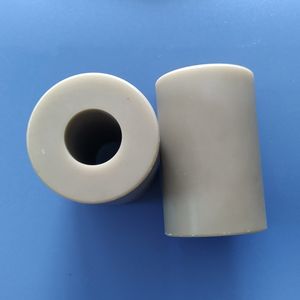
(Very High Thermal Conductivity Aluminum Nitride Ceramic AlN Substrate)
REQUEST A QUOTE
RELATED PRODUCTS
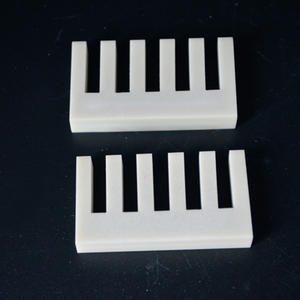
Stability Advanced Aluminum Nitride Aln Ceramic Sheet for Heat Sinks
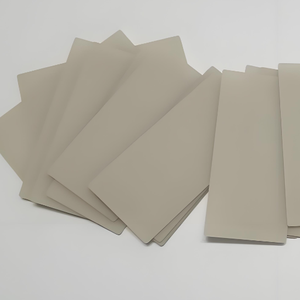
0.5/ 0.635/ 0.1mm Thickness ALN Ceramic Plate Alumina Nitride Ceramic Substrate
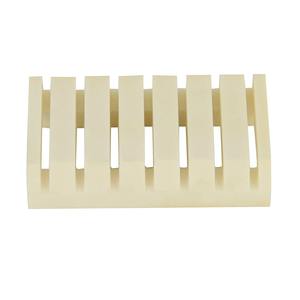
Factory Customized Aluminum Nitride Plate Aln Ceramic Semiconductor Substrate
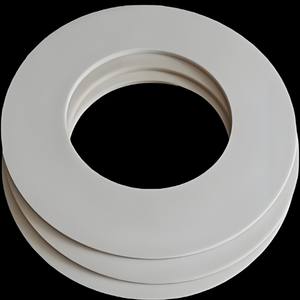
High Thermal Aluminum Nitride Ceramic Disc Aln Substrate
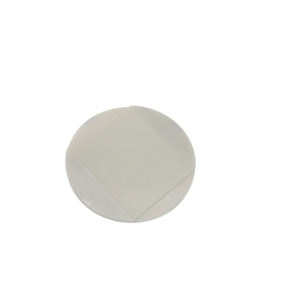
High Purity 99.95% Aluminum Nitride AlN Spherical Powder 3-5um Ceramic Microspheres Durable Heat Conductive Material
